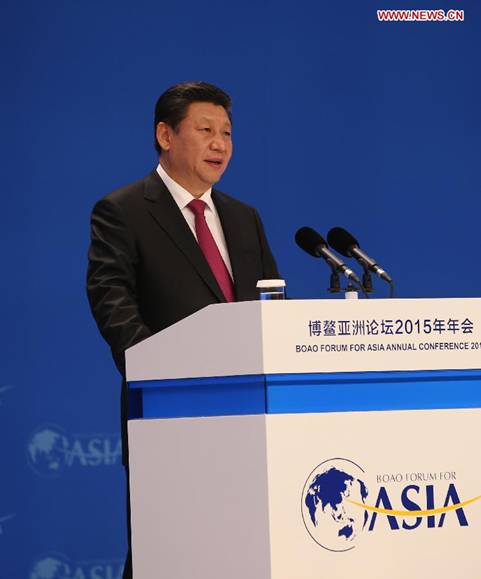The basis of China's 'win-win' foreign policy
- By John Ross
 0 Comment(s)
0 Comment(s) Print
Print E-mail China.org.cn, March 30, 2015
E-mail China.org.cn, March 30, 2015
|
|
|
Chinese President Xi Jinping delivers a keynote speech at the opening plenary of the 2015 annual conference of the Boao Forum for Asia in Boao, south China's Hainan Province, on March 28, 2015. [Photo/Xinhua] |
In his speech on Asia's "Community of Common Destiny" at this year's Boao Forum, Chinese President Xi Jinping spelled out China's conception of "win-win" relations in Asia and the world. This therefore provides a good opportunity to examine the fundamental bases of China's foreign policy. It also highlights the reason for the recent failure of the United States to persuade several countries not to join the Asian Infrastructure Investment Bank (AIIB).
Such analysis also immediately clarifies why the idea of "win-win," the core of China's foreign policy approach, is not just a clever piece of PR but has a clear economic basis which underpins its other dimensions. It also illustrates why immediate economic questions in Xi Jinping's speech - the AIIB, the "New Silk Road," China's "Belt and Road" initiatives for infrastructure links in Asia - were connected to wider observations on cultural and "civilizational" relations between countries.
To address first the economic core issue, Adam Smith, the founder of modern economics, noted in the first sentence of "The Wealth of Nations" that the most powerful force in economic development was division of labor, including international division of labor: "The greatest improvement in the productive powers of labor, and the greater part of the skill, dexterity, and judgment with which it is directed, or applied, seem to have been the effect of the division of labor." The rest of Smith's analysis unfolds from this starting point.
Others had previously described division of labor, but Smith's genius was to understand its implications - not only for international trade, which he famously advocated, but also for domestic development. However, such increasing division of labor has the immediate consequence of making one producer increasingly dependent on inputs from others. Put in technical economic terms, indirect inputs into production, that is products created by others, rise relative to direct ones.
In the most modern form of this process, contemporary globalization, such as networks of interconnected production, span the globe. For example, the WTO found that only 37 percent of the value in a typical "U.S. car" was actually added in the U.S. Because of the use of numerous components - batteries, wheels, seats etc. - 30 percent of the value in the car was from South Korea, 18 percent from Japan, 8 percent from Germany and 4 percent from Singapore and Taiwan. Only such a vast interconnected web of production makes modern efficiency - and therefore contemporary high living standards - possible.






